MONA
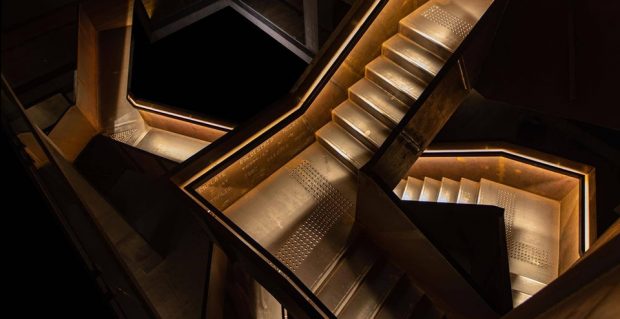
November 2019
MONA (The Museum of Old and New Art) in Hobart, is a must-see. Crouched on a promontory on the Derwent River, it can be approached from land – by car, dedicated bus, airport shuttle, or bike for the insanely fit (or insane) – or you can take one of the two Mona Roma ferries ($22 pp), as we did, a 20 minute cruise going under the infamous Tasman Bridge and featuring a nice little bar (our cab driver from the airport recommended this, saying, presciently, “You’ll need a drink before you see the Art.”)
The Gallery itself sits modestly on top of a hill, with various pavilions and spaces surrounding it. You enter ($30 pp – free for kids and Tasmanians – there’s a joke there, somewhere!), descend from the foyer (by stair or sci-fi type lift) into the earth, whereupon various galleries – better described as vaults, tunnels, nooks and crannies, display the various sights, sounds, and smells.
TVC soon discarded the “Map”; you’d need a PhD in cartography to follow it so in that sense MONA is like most museums [But more so – as Walsh says in his book, A Bone of Fact, “I want you to be lost, to trust randomness and have faith in technology.”] Better to wander hither and thither, to enjoy the assortment of byways that reveal (and sometimes conceal) their wares in clever ways. A lot of raw metal infrastructure predominates, and stairs go everywhere – it’s like the hideaway of a Bond villain. But the bad news is that the Art on view is generally not of a quality to commend itself to posterity. There’s not a decent picture or modern sculpture in the entire collection.
There are several pieces to like however. Julius Popp’s wall of word-forming water near the Void (a multi-storied space that you can peer into, if you’ve you the nerve), for example. The words, formed by a combination of human mechanics and gravity, make no sense (as far as we can tell – they’re drawn in real time from the internet) as a pneumonic or a sentence, but are impressive for all that.
P was reassured by some genuine Egyptian sarcophagi, and some genuinely beautiful miniatures from classical antiquity, but their presence was still rather incongruous. There’s a void, essentially, when it comes to the ‘old’ art, and this seems to us to be a substantial potential problem for MONA’s longevity.
There’s a huge space for a myriad small Sydney Nolan pictures, with an illuminated series of curves running through to suggest a rainbow serpent: poor (see below). There were several pointless and propagandised piles of tat. In the same room, though, there was an inspired metal skull, 10x life-size or more, in which ingenious hands, birds, books etc. pulsated with life.
There was an industrial ordure machine, in which several glass vials suspended from a metal structure, carrying a range of contents from relatively clean water to cloacal abundance – it stank on a number of levels, although one of art’s designs is of course to shock – as did the statue of a dead horse, and the settler’s hut with a Persian rug covered in dead hair.
We liked the bone cupboard that harkened back to the days of scrimshaw, the interactive music drawers, the white faux Chinese temple, and the intricate wired vehicles and spiritual hut in the grounds (see both below) – the latter reminded us of King Ludwig’s Moorish teahouse at Linderhof Palace.
But much of the rest seemed simply silly, even desperate.
Take, for example, the room of models, including the notorious bust of Captain Cook in a Colonial Thief’s ski-mask (a tired and overworked trope, either a copy or obtained from the NGV – natch!), and the hall given over to a giant mineshaft experience, complete with a board-game called ‘Extraction’ – Ho Hum.
To be fair, MONA is a breath of fresh air in that it does not take itself too seriously. It describes itself as “a temple to secularism, rationalism, and talking crap about stuff you don’t know much about.” Creator David Walsh has described MONA as a “subversive adult Disneyland,” and indeed we did pipe some ladies who ought to know better, cackling as they galloped up one of the tunnels. But MONA is, or should be, better than a pallid, grubby version of Disneyland – or to be more cruelly apt, the Epcot Centre.
But at the end of the day, MONA is a fillip for Hobart, and Tasmania. The design and locale is sensational, with room for expansion. It beautifully encapsulates a highly individual vision and weltanschauung. The place is abuzz with people having a great time imbibing and or reflecting. The bars and restaurants (when you can snaffle a seat) are stylish and give great views of the water or the gallery interiors. So we hope Mr. Walsh and his cohort flourish. Let’s just pray that his people give The Varnished Culture a call about some curatorial enhancements.
Leave a comment...
While your email address is required to post a comment, it will NOT be published.

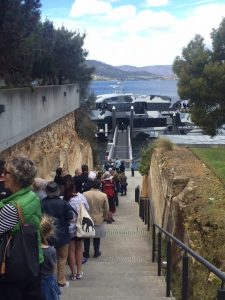
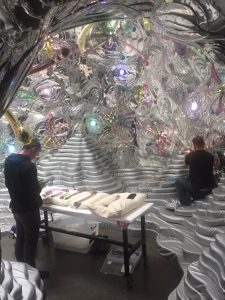
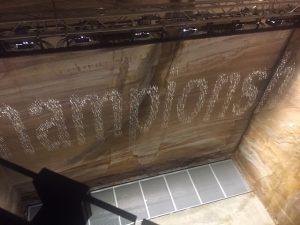
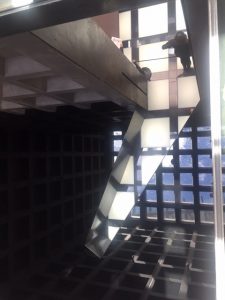
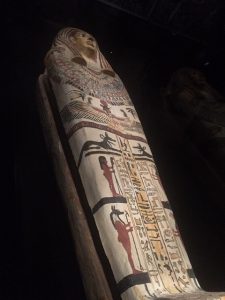
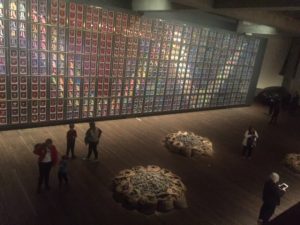
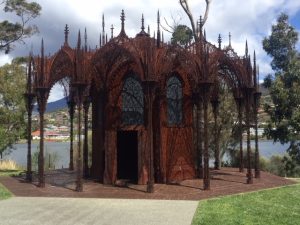
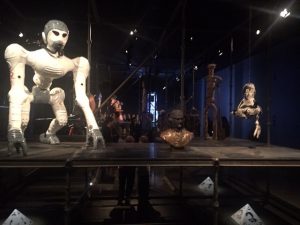
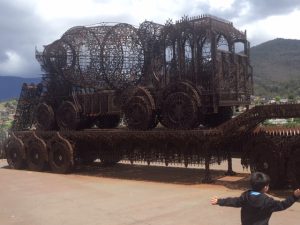
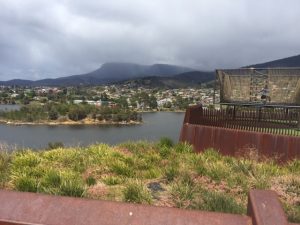

2 Comments